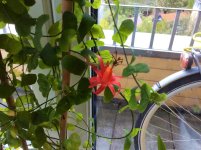imPsimon
Rising Star
Maybe these papers might be of interest to some.
Cant access these though as I'm not a researcher.
Cant access these though as I'm not a researcher.
Attachments
-
Assessment+of+Sedative+Effects+of+Passiflora+edulis+f+flavicarpa+and+Passiflora+alata+Extracts...pdf327 KB · Views: 0
-
Toxicity+and+genotoxicity+evaluation+of+Passiflora+alata+Curtis+JEP+Boeira+2010.PDF410.9 KB · Views: 0
-
Steroidal+and+Triterpenoidal+Glucosides+from+Passiflora+alata.pdf36.6 KB · Views: 0
-
Seed+germination%2C+desiccation+tolerance+and+cryopreservation+of+Passiflora+species.pdf65 KB · Views: 0
-
Preoperative+Oral+Passiflora+Incarnata+Reduces+Anxiety+in+Ambulatory+Surgery+Patients.pdf152 KB · Views: 0
-
Plant-Based+Medicines+for+Anxiety+Disorders%2C+Part+2.pdf399.5 KB · Views: 0
-
Plant-Based+Medicines+for+Anxiety+Disorders%2C+Part+1.pdf338.6 KB · Views: 0
-
Passiflora+manicata+(Juss)+aqueous+leaf+extract+protects+against+reactive+oxygen+species+and+p...pdf907.3 KB · Views: 0
-
Passiflora+incarnata+L+(Passionflower)+extracts+elicit+GABA+currents+in+hippocampal+neurons+in...pdf1.9 MB · Views: 0







